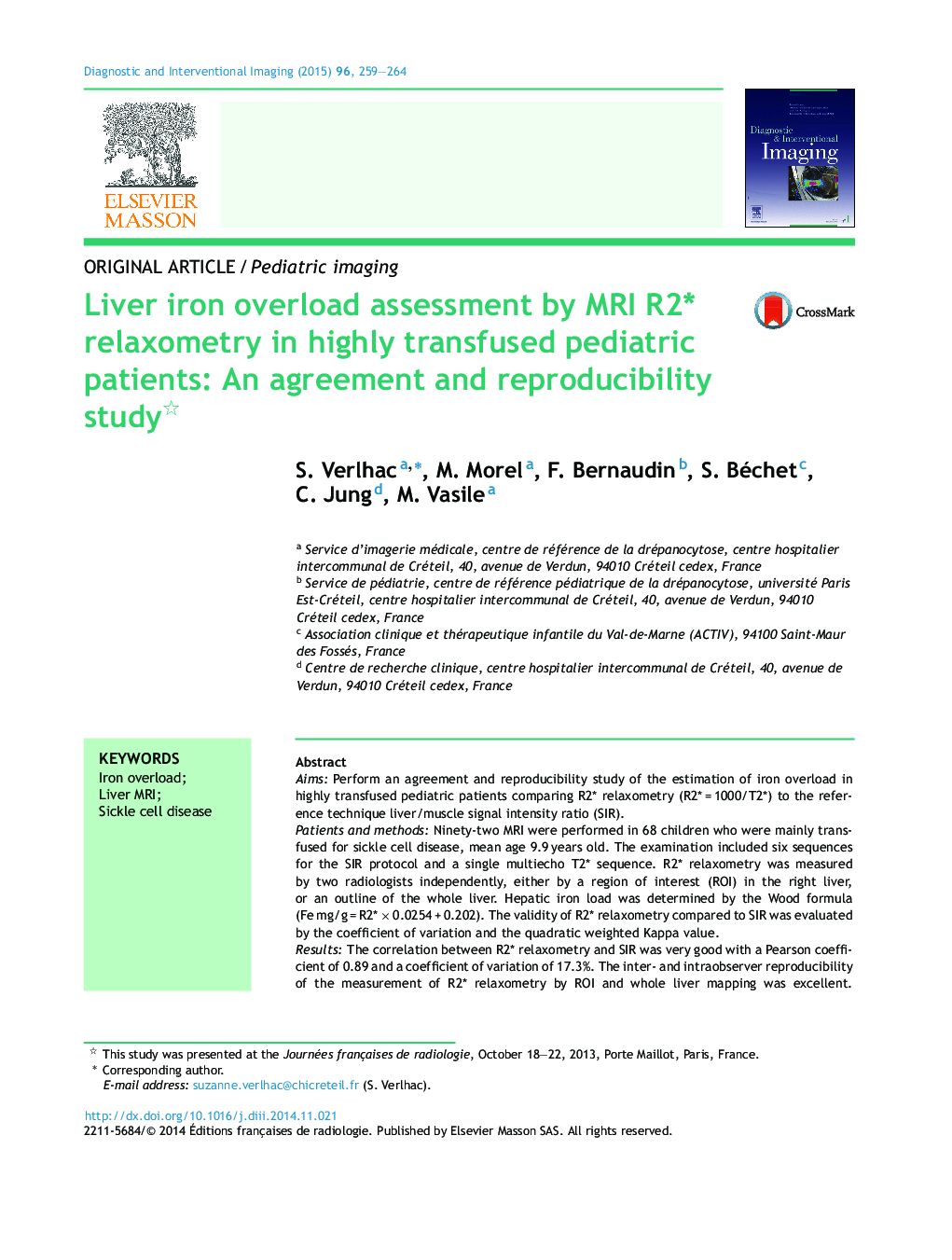| Article ID | Journal | Published Year | Pages | File Type |
|---|---|---|---|---|
| 2725760 | Diagnostic and Interventional Imaging | 2015 | 6 Pages |
AimsPerform an agreement and reproducibility study of the estimation of iron overload in highly transfused pediatric patients comparing R2* relaxometry (R2* = 1000/T2*) to the reference technique liver/muscle signal intensity ratio (SIR).Patients and methodsNinety-two MRI were performed in 68 children who were mainly transfused for sickle cell disease, mean age 9.9 years old. The examination included six sequences for the SIR protocol and a single multiecho T2* sequence. R2* relaxometry was measured by two radiologists independently, either by a region of interest (ROI) in the right liver, or an outline of the whole liver. Hepatic iron load was determined by the Wood formula (Fe mg/g = R2* × 0.0254 + 0.202). The validity of R2* relaxometry compared to SIR was evaluated by the coefficient of variation and the quadratic weighted Kappa value.ResultsThe correlation between R2* relaxometry and SIR was very good with a Pearson coefficient of 0.89 and a coefficient of variation of 17.3%. The inter- and intraobserver reproducibility of the measurement of R2* relaxometry by ROI and whole liver mapping was excellent. However, we observed a common positive variation of one class between SIR and R2* relaxometry, with higher hepatic iron content values with SIR than with R2* relaxometry.ConclusionHepatic iron content can be rapidly and precisely estimated on MRI by multiecho gradient-echo sequences.
